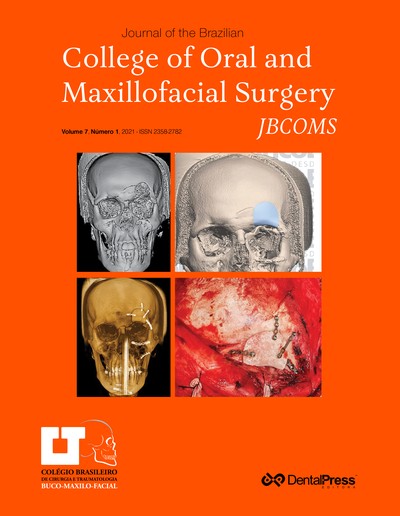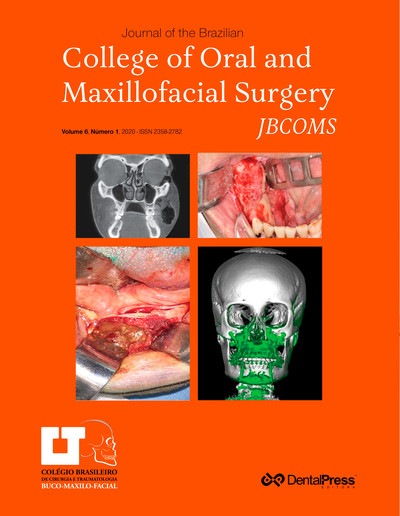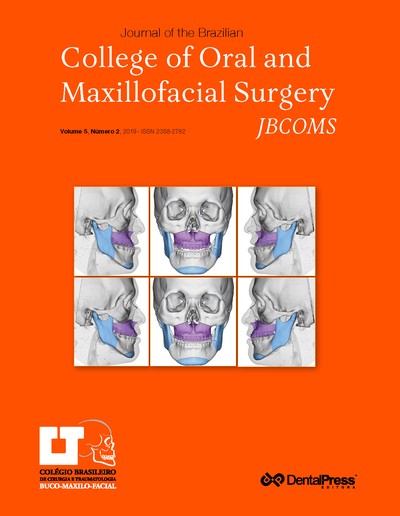
Alloplastic reconstruction of temporomandibular joint: indications and contraindications
LEANDRO E. KLUPPEL, CAIO AUGUSTO MUNUERA UETI
Introduction: The alloplastic reconstruction has been one of the successful applications for the treatment of degenerative diseases of the temporomandibular joint. The aim of the present study is to present a clinical case of alloplastic reconstruction of the temporoman- dibular joint and to carry out a review of the literature on this treatment modality, with emphasis on indica- tions, contraindications, advantages and disadvantag- es. Methods: A search was performed in the following electronic databases: Pubmed/Medline and SciELO. Ten relevant articles were selected, which demonstrate that the alloplastic reconstruction of the temporoman- dibular joint is indicated for the treatment of TMJ se- verely compromised by pathologies such as: ankylosis, inflammatory arthritis, reabsorptive pathologies, tu- mors, successive failures of autogenous reconstruction, failures of alloplastic reconstruction itself, and con- genital deformities such as microsomia. The alloplas- tic reconstruction shouldn’t be used in patients with systemic conditions favoring infections, local joint infection, allergy to materials, and poor bone quality and quantity for fixation of prosthetic components. Case report: A 62-year-old patient diagnosed with advanced osteoarthritis (Wilkes V) who underwent condilectomy and alloplastic reconstruction of both temporomandibular joints. Conclusion: The patient is now five years follow-up, presenting a good mouth opening, occlusion preserved and without pain.
Keywords: Mandibular condyle. Temporomandibular joint disorders. Osteoarthritis.
How to cite: Kluppel LE, Ueti CAM. Alloplastic reconstruction of temporomandibular joint: indications and contraindications. J Braz Coll Oral Maxillofac Surg. 2020 May-Aug;6(2):50-5.
Friday, September 27, 2024 02:18










